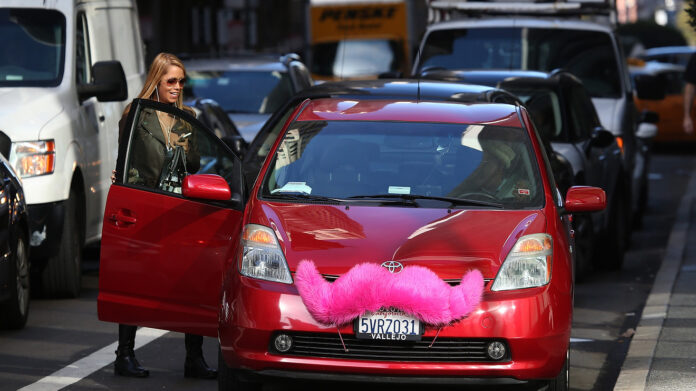By Brett Arends
Ridesharing giant Lyft went public on March 28 and, earlier this month, its bigger rival Uber said it will soon follow with its own IPO. The IPO prospectus for Lyft and the initial filing to the Securities and Exchange Commission by Uber lift the veil for the first time on the sustainability of their business models and — for now, at least — their low prices.
Ride-sharing services are designed to undercut traditional taxi cabs by allowing passengers to share a ride for a cheaper price. Ideally, this results in higher revenue for the driver, but only if they manage to pick up other customers en route. If one person takes a ride-share and the driver finds no other passengers, the Uber or Lyft driver may end up losing money.
At the moment, both companies are losing money. Your rides are effectively being underwritten by venture capitalists who have financed the companies. Uber has collected a total of $13.6 billion in private investment, according to FactSet. Lyft attracted approximately $5.2 billion in private investment prior to its IPO. That begs the question: Will ride-sharing still be a cheap, and attractive, alternative to owning your own car when these companies have to turn a profit?
Long-term investors may question whether that is sustainable in a competitive market. Anyone standing on a street corner trying to hail a ride on their smartphone can compare the prices of Uber and Lyft in a moment.
It costs $29.86 to book an Uber pool from North Williamsburg, Brooklyn to the Upper West Side of Manhattan, a five-mile journey, during rush hour. It costs slightly more ($30.53) for a shared ride on Lyft, Uber’s smaller publicly-listed rival, but only $19.85 on Via, another ride-sharing app that is attempting to increase its market share.
This competition may put downward pressure on margins at Uber and Lyft, as the two companies fight for your dollars. Yet economists note that a duopoly — an industry effectively controlled by two big rivals — tends to be more stable and profitable than an industry where anyone can jump in.
The more people who use ride shares, the more likely these companies will benefit from economies of scale, and be able to keep their prices down. Lyft says that just over half its riders use its service to commute to work, and 35% do not even own or lease their own vehicle. A third of Lyft users, in other words, are now post-car. And while the number of active users is reasonably small, it is growing almost exponentially.
The scale of the economic opportunity for these two companies is dramatic, studies show. Owning and driving our own cars is extremely costly and inefficient, in time, effort and money, studies show.
Both Uber and Lyft are hoping the expense of owning and running a car will be enough of an incentive to lure more people to use their ride-share services.
Arends, Brett. “Lyft and Uber Lure People with Low Fares, but How Long Will Cheap Ride-Sharing Last?” MarketWatch, MarketWatch, 25 Apr. 2019. www.marketwatch.com/story/what-the-lyft-ipo-reveals-about-the-rapidly-changing-driving-habits-of-americans-2019-03-05
Analysis–
This article analyzes Lyft and Uber’s business strategies. Lyft and Uber are ride hailing services, which are services that bring passengers to drivers in their personal vehicles. But both companies are now opening up for ride sharing, which is a cheaper option for riders, just less private. This article talks about how this ride sharing feature may not be a wise decision. Often times companies invest in new business ideas and are aware of an initial loss, but they commit because in the long term there will be profit. However, for Lyft and Uber the long term does not seem to be as profitable especially with the cheap prices of ride sharing. The author of the article goes on to say that Uber and Lyft may increase prices as more and more people are moving away from owning vehicles. But how long will Uber and Lyft have to wait?
This article was interesting to read. I think ride sharing is the future, however, with COVID-19 people are rethinking this business model…




